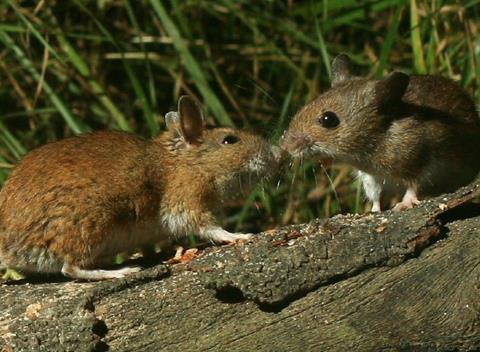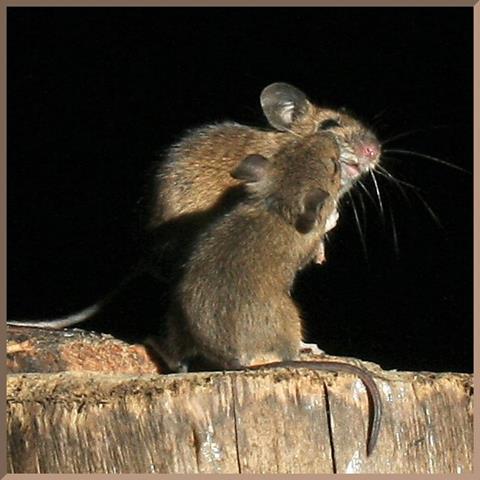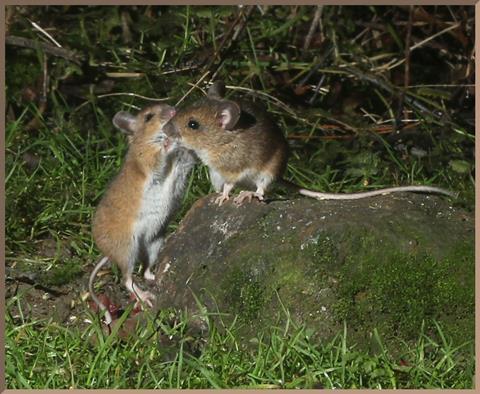New research from the University of Oxford has revealed that the social connections of wild mice have a strong influence on the microbes found in their guts. Furthermore, social contact is both more influential and spreads a different set of gut microbes than those transferred through a shared environment. The study was published today in the journal Nature Ecology & Evolution.

Social interactions (such as grooming) between animals provide key pathways for gut bacteria, many of which cannot survive in the outside environment, to spread. In the new study, researchers tracked 100 wild wood mice (Apodemus sylvaticus) living in Wytham Woods, Oxfordshire, and their social associations with each other for 10 months, whilst sequencing the DNA of gut bacteria from their faeces to identify which microbes were present. By linking their microbiome to their behavioural patterns, they found that gut microbes could spread both through social networks and shared environments, but these social and environmental routes of spread had very different effects.
Social networks
Social networks had a much stronger influence on the gut microbiome, with pairs of socially associated mice sharing many more bacteria than mice that were only using the same environment. The analyses also suggested that social and environmental contacts spread different types of gut microbes, with anaerobic (oxygen-intolerant) bacteria more dependent on social contacts, while oxygen-tolerant bacteria could be shared through the environment.
Lead author Dr Aura Raulo (Department of Biology, University of Oxford) said: “We were surprised to find that different gut microbes spread through social contacts and shared environments among mice. This implies that social behaviour and contacts with the natural environment may affect different parts of our microbiome, which could have different effects on our health.”
For instance, anaerobic bacteria, being ‘stuck’ inside their hosts, are thought to harbour more potential to be mutualistic (friendly) and healthy for their hosts. Oxygen-tolerating microbes, which can thrive either inside or outside an animal host and whose fate is less dependent on the host’s wellbeing, are thought to be more likely to cause disease.
Health and social behaviours
The fact that social contacts were so influential in shaping the gut microbiome of this relatively non-social species is striking, suggesting that social behaviours can play an important role in health, even in less social species. Since transmission patterns of gut bacteria are likely to follow similar rules in other animal species, these results may improve our understanding of how social interactions and the environment shape our own microbiomes.

Dr Raulo added: “While the microbiome is an important part of our bodies and influences our health, curiously it does not belong to any single individual – it is an ecosystem nested inside a physiological system. Its specific ‘recipe’ arises because of who and what we are in contact with: partly from our environment, such as our contacts with local biodiversity and soil, and perhaps most importantly from our social situation – who our friends are and who their friends are.”
Patterns of isolation
While the reduced environmental contact of urban lifestyles may have negative impacts on our microbiomes and has been associated with issues such as allergies and immune diseases, the results from this study suggest that social contacts could play an additional role in these patterns. Urban populations not only have reduced contact with local biodiversity, but are also likely to have different social networks from more rural populations.

As we change our social connectedness to others, our microbiomes are also likely to change. Notably, patterns of social isolation might reduce diversity in our microbiomes and especially our anaerobic microbes.
The researchers next plan to investigate how these different social vs environmental modes of spread are related to the relationship different gut microbes have with their host, including how widespread they are across animal species, and how beneficial they are to their host.







No comments yet